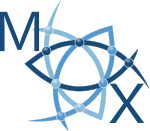Machine learning is a technique that was developed in the field of computer science, but is meanwhile rapidly spreading for applications in many other disciplines. Originally intended as a tool for pattern recognition, machine learning algorithms can be taught to extract trends in large data-sets, which can then be used to make accurate predictions beyond the training data. Artificial neural networks are a class of such algorithms, which are inspired by biological brains consisting of interconnected neurons. These neural networks are extremely flexible and can be adapted to model various complex problems.
In a collaboration with Prof. Ghasemi at the Institute for Advanced Studies in Basic Sciences, we have recently been developing artificial neural networks to model interatomic potentials by feeding them data from highly accurate and computationally demanding quantum mechanical calculations of molecular and crystalline structures. Once a neural network has “seen” a sufficient amount of such structures, it can make predictions on its own without knowing anything about physics or chemistry, at a fraction of the computational cost of quantum mechanical methods. However, until recently, such neural network potentials suffered from a major drawback: although they give excellent results for systems with chemical environments comparable to those in the training set, they fail to describe structures dissimilar to any training data.
With the charge equilibration via neural network technique (CENT) we were able to alleviate these drawbacks. Using only training data from small molecules, the CENT potential can correctly predict the energies of crystals, surfaces, and many more. We recently used this potential in combination with the minima hopping structure prediction method to investigate oxide materials. On one hand, we studied small clusters and low-density phases of ZnO and predicted a plethora of metastable materials with potential use in energy applications. On the other hand, we developed a new algorithm to explore the structures of 2-dimensional materials and used it together with CENT to screen the configurational space of TiO2. Our calculations showed that a nano sheet with hexagonal pores in a honeycomb lattice has the lowest energy among all possible 2-dimensional structures. According to our calculations, this new material has a band gap that can be tuned through defect engineering and is a promising material for photocatalytic water splitting.
The results of our most recent work are published in Physical Review B and in Chemistry of Materials.
